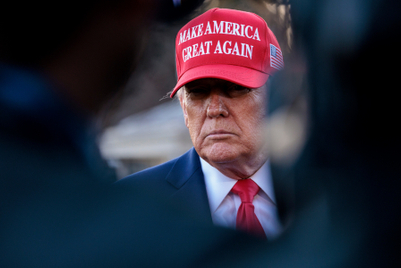
Donald Trump shocked the world by becoming president-elect. The one crucial question that piqued the interest of many was why.
Data has shown that Trump’s strategy was to address the working class, the complete opposite of the professional group that was rooting heavily for Clinton. Likewise, it was blue-collar workers tired of losing jobs to ‘outsiders’ that voted for Brexit – for protectionism.
Zooming out, we see a lot of similarities to what happened in the US and UK on our local shore, in particular from a marketing and communications perspective. Using our Consumer Connection System, which surveyed more than 4,000 Malaysian consumers, we have gained valuable insights into blue-collar workers (BCWs).
They identify themselves differently from a marketer’s professional world. Unearthing insights can provide fresh perspectives on how we look at communications in Malaysia, away from the traditional race-based marketing.
With a total population of 5.6 million, 1 percent more than the professional group, the BCW community in Malaysia certainly deserves greater or at least equal attention and understanding over their lifestyles and behaviours.
For example, Malay is the dominant race in both segments and BCWs reside everywhere, not just in rural areas. There are only 5 percent more white-collar workers in market centres. The group populations of the groups are almost neck-to-neck in what we thought were predominantly metropolitan areas.
BCWs are not poor, they earn between RM1,000-RM4,000, meaning 34 percent of them fall into the middle class category, while 38 percent are in the same class as professionals.
With this in mind, here are six out of many glaring truths we’ve summarised from our findings on the attitudes that separate blue and white-collar workers.
Professional groups are sophisticated in their brand choice. They shop in flocks and are concerned about image, whereas BCWs prefer no-nonsense straight-talk, and key opinion leaders’ credibility – 57 percent say they’ll buy a product if there’s a celebrity endorser. While BCWs are aspirational shoppers, they are also disciplined – more than half say they purchase strictly according to their shopping list
2. I do vs I listen
While both see themselves as leaders of their social pack, professionals tend to get involved in community issues while BCWs decide to abstain. But that doesn’t mean they don’t care – they just take interest in local news – 55 percent feel it’s important to keep up with local matters. This proves that the nature of what concerns the two groups greatly differs: professionals have a wider world view, while BCWs feel inward, grassroots issues matter more.
- Balanced meals vs balanced lifestyle
Time-strapped professionals prioritise meals as the main source of a healthy lifestyle (52 percent eat well-balanced nutritious meals) because it is something they can control everyday, while BCWs put more emphasis on a balanced lifestyle. The latter tends to be more active, with more time in hand as compared to the former. Both are equally health conscious, but the means to achieving health goals are completely different. The higher income group has more food choices as they are less sensitive to price, with the majority always looking out for healthy products.
- Focused vs diversified leisure activities
The assumption that professionals earning higher incomes have more access to music, arts and sports is debunked here. Due to time constraints, Malaysian professionals turn to travel as the number one method for rest and relaxation (55 percent) followed by entertaining guests at home (52 percent). On the contrary, BCWs have more diversified leisure activities, such as enjoying sports (51 percent), art (47 percent), and music (42 percent) on top of travel.
- Instant gratification vs disciplined shoppers
Professionals tend to have weaker self-control (40 percent admit to spending money without thinking) when it comes to purchasing goods and services they want, preferring to pay via credit. BCWs have greater restraint when it comes to shopping – as many as 55 percent say they prefer to defer big purchases until their finances are healthier.
- Tech attitude: outward vs inward
Any income earners in Malaysia aspire towards ownership of gadgets and technology. Targeting BCWs should be mobile-first considering how low laptop/personal computer ownership is in this segment – 75 percent own a smartphone but only 30 percent own a computer. The professionals gravitate towards search while BCWs prefer to use the web for entertainment. While almost all professionals have a Gmail account, one of the most frequently visited websites for BCWs is local commerce site mudah.my.
From our data crunch, we conclude that the race card that has divided marketing in Malaysia was overrated and it’s time to rethink priorities. The apparent divide is the professional group versus the working group. And true enough, we found more disparities between coloured collars than the different races in terms of attitudes and expectations.
Malaysia is one of the very few countries in which marketers need to divide their budget and conquer the races. But what if we have been looking at this wrongly all this time? As global economic surprises continue to unveil well into 2017, the smart plan is to launch inclusive marketing strategies to cover as many economic segments as possible. The race card should be put to rest.




.jpg&h=334&w=500&q=100&v=20250320&c=1)
.jpg&h=334&w=500&q=100&v=20250320&c=1)

.png&h=334&w=500&q=100&v=20250320&c=1)

.png&h=334&w=500&q=100&v=20250320&c=1)

.jpg&h=334&w=500&q=100&v=20250320&c=1)





.jpg&h=268&w=401&q=100&v=20250320&c=1)



.png&h=268&w=401&q=100&v=20250320&c=1)